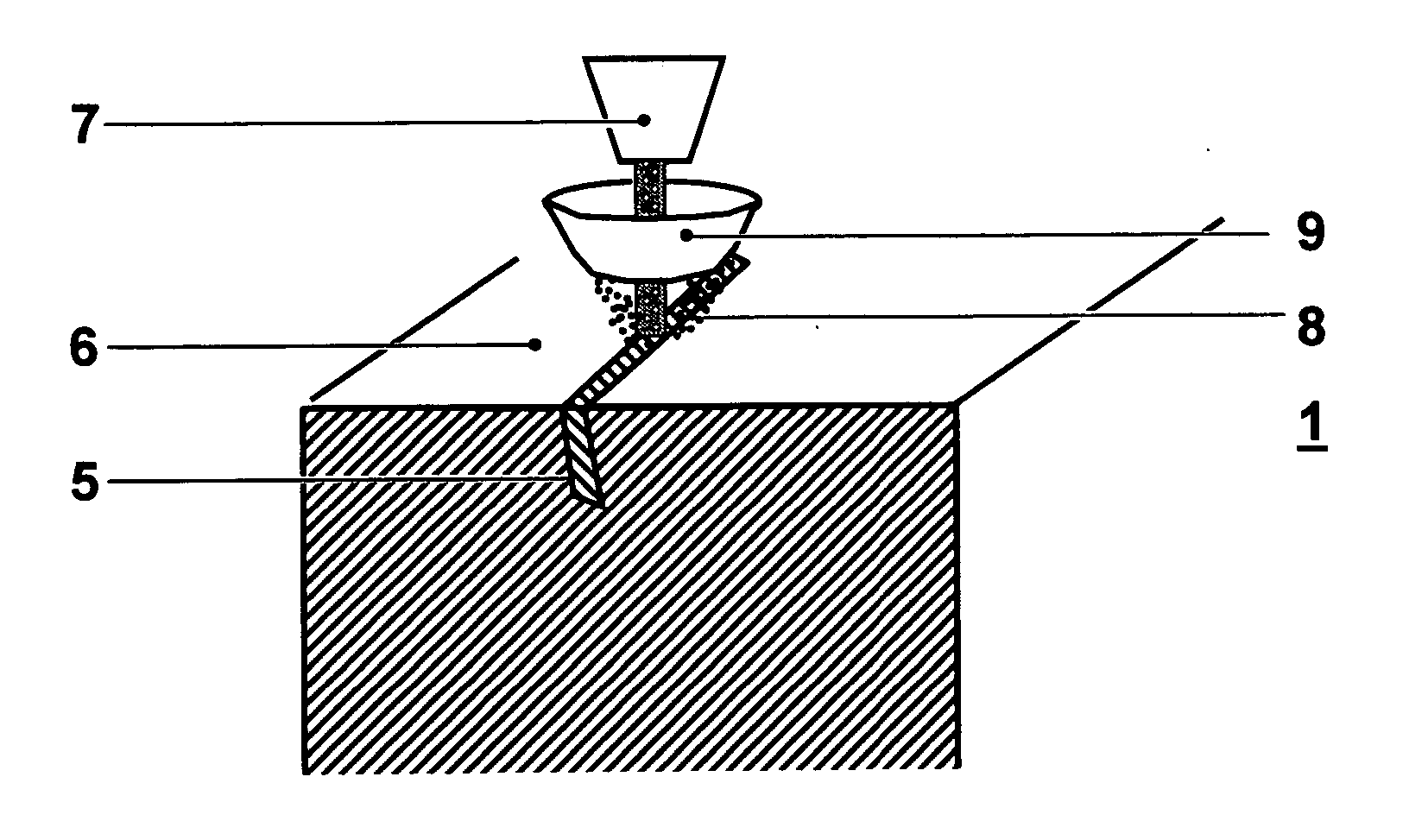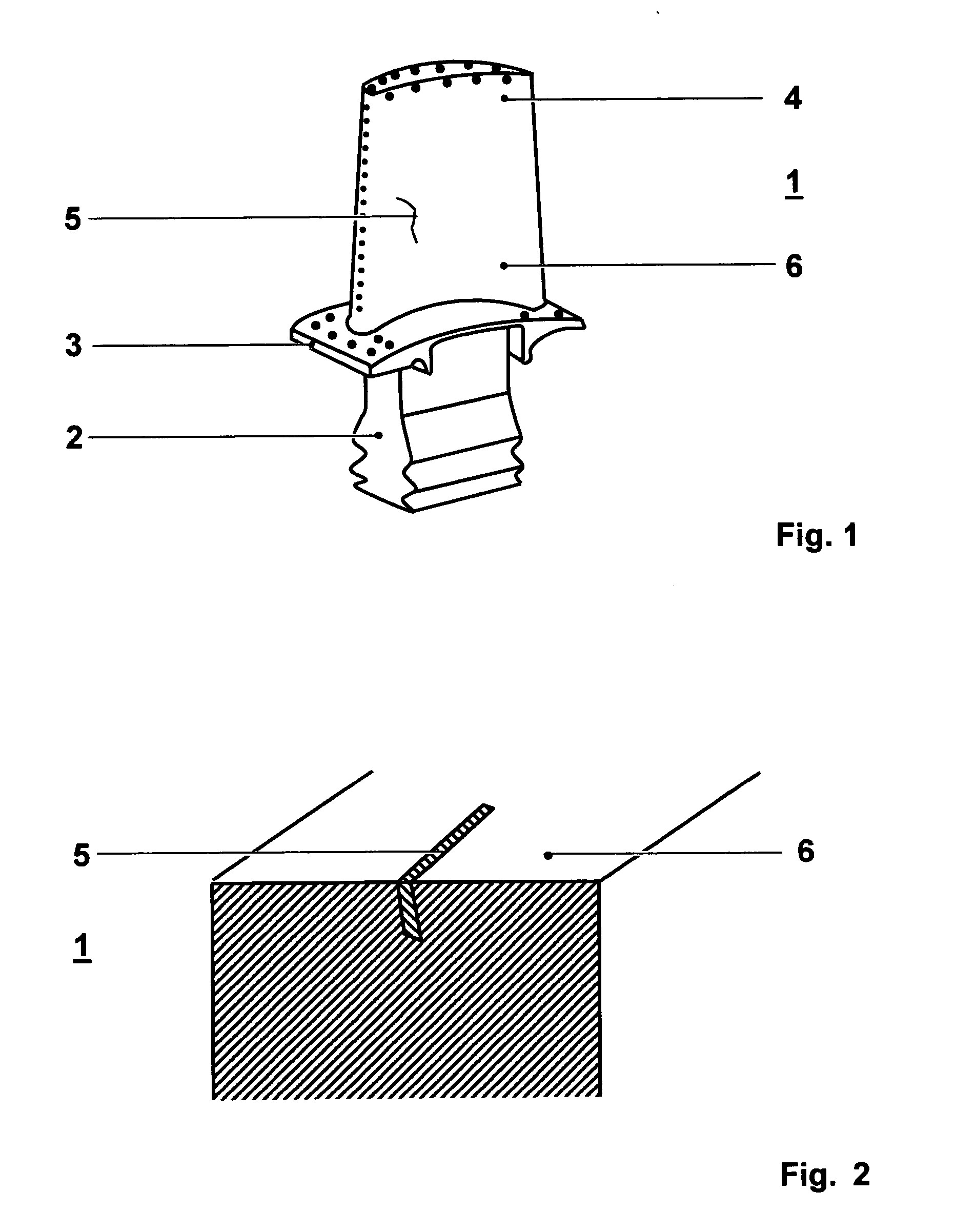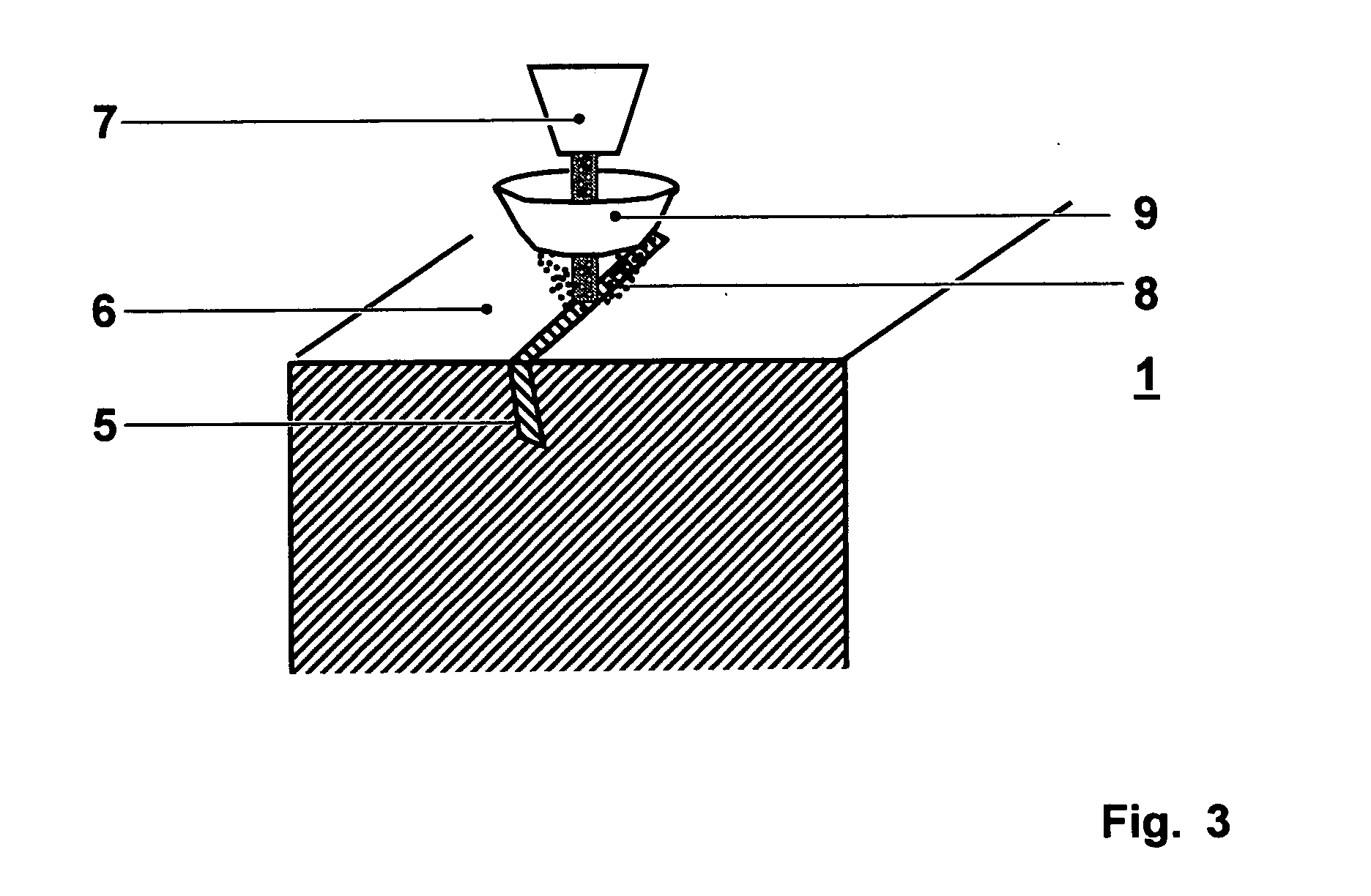Method of removing casting defects
a casting defect and removal method technology, applied in the direction of blade accessories, crystal growth process, machine/engine, etc., can solve the problems of freckle formation, critical defects, and inability to meet the needs of casting, and achieve the effect of convenient and cost-effective manner
- Summary
- Abstract
- Description
- Claims
- Application Information
AI Technical Summary
Benefits of technology
Problems solved by technology
Method used
Image
Examples
Embodiment Construction
[0034] Referring to the drawing figures, like reference numerals designate identical or corresponding elements throughout the several figures.
[0035]FIG. 1 shows a single crystal (SX) or directionally solidified (DS) article 1 such as blades or vanes of gas turbine engines, the gas turbine blade comprising a root portion 2, a platform 3 and a blade 4 and having a surface 6. The article can as an example be made from a nickel or cobalt based super alloy. Investment casting methods for producing such SX or DS articles are known e.g. from the prior art U.S. Pat. No. 4,96,501, U.S. Pat. No. 3,690,367 or EP-A1-0 749 790. As seen as well in FIG. 2, the article 1 exhibits a linear casting defect 5 such as a freckle, a sliver or any equiaxed or recrystallized grains of limited size somewhere after the production process. Non grain related linear defects include linear chains of pores, surface micro-cracks and dross or inclusions. FIGS. 3 and 4 show the different steps of removing the castin...
PUM
| Property | Measurement | Unit |
|---|---|---|
| Temperature | aaaaa | aaaaa |
| Time | aaaaa | aaaaa |
| Composition | aaaaa | aaaaa |
Abstract
Description
Claims
Application Information
 Login to View More
Login to View More - R&D
- Intellectual Property
- Life Sciences
- Materials
- Tech Scout
- Unparalleled Data Quality
- Higher Quality Content
- 60% Fewer Hallucinations
Browse by: Latest US Patents, China's latest patents, Technical Efficacy Thesaurus, Application Domain, Technology Topic, Popular Technical Reports.
© 2025 PatSnap. All rights reserved.Legal|Privacy policy|Modern Slavery Act Transparency Statement|Sitemap|About US| Contact US: help@patsnap.com



